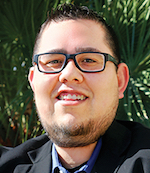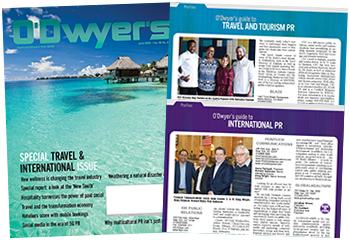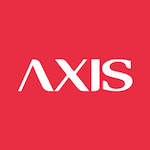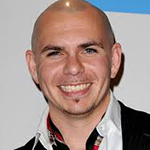 David Perez |
Gone are the days where brands communicated at their audiences as opposed to communicating with them. Brands must now tailor their messages to be part of the conversation with these diverse groups.
The groups identify themselves as a certain type of culture. These groups are becoming the new multicultural wave of communications. While we must not omit communicating strategies with diverse ethnic groups, we must also consider that multicultural communication is evolving.
A targeted campaign
Where’s my audience? If it were that simple, we would be able to flood our message across the many platforms and communicate with our audience. Multicultural communications has become more than pushing a message out to a certain demographic. Understanding that a language has become more than just speaking and writing Spanish or Cantonese. We must adjust our writing methods and strategies to relate to our many audiences.
|
|
For instance, when we communicate our message, the text, images and message must be different on social platforms. Thus, the messaging should be targeted to your audience and must relate to their identity, their culture.
Brands and agencies need to immerse themselves and understand the audience than the basic questions of how they think. Communicators must understand why their message needs to engage with their audience. Why should their audience care about the message? The simple “why” may not be so simple. As we begin to understand our cultural audience, we must immerse ourselves within the group. Targeted multicultural communications is evolving.
The challenge
The next generation is become immune to marketing and advertising. They do not want to be talked at, but want to be involved in the message. For most brands and agencies, this challenge is an opportunity to use traditional tactics such as word of mouth. But how do we position our brand to communicate with our group?
Agencies are hiring younger and more diverse communicators. As the digital age moves faster and trends catch on faster, it is essential to stay active and continue learning about the industry. Bringing a younger and diverse group to brainstorming sessions can spark new concepts. Encourage your team to think beyond ethnicity and language — think disruption!
Cultural Millennials: the obvious strategy
Multicultural Americans are not only driving culture and language, but driving markets. How can communicators join in and become part of that culture? Presently, making up the largest population of the United States, Millennials will increase to more than 81 million by 2036. Currently, 42 percent of U.S. Millennials are African-American, Asian-American and Hispanic. With more than 92 percent of Millennials utilizing mobile phones to engaging with brands, mobile communication strategies have become more vital to strategy. Millennials focus on brand communication and customer service. It is a group that is growing and a group that will drive a message further. The obvious strategy is building a plan for your millennial group. We must go deeper than just a millennial strategy. What about those niche groups within Millennials?
Cultural comms: the strategic strategy
As language continues to change, culture drives the biggest influence. Brands must build groups and areas to establish their own culture. Better yet, brands must adapt to the trends and be part of the conversation without forcefully marketing their brand into the culture. Communication must be organic. Culture is organic. Identity is the new multicultural communication.
Anticipating the next conversation may be difficult. But if we can drive the conversation with value and stories, our message will take off.
The power of groups
Malcom Gladwell’s The Tipping Point outlines how groups become powerful and the driving force to create change and spread infectious information. Finding these groups can be easy, but driving the message within the group may provoke a more challenging strategy.
This is how multicultural communication strategy is evolving. No longer are ethnic and language the only driving strategy, but cultural identity is inserted as the new approach. How can we get in front of our audience? Groups on Facebook, social meetups and likeminded conversations need to drive the strategy. People want to engage and be part of a specific community, they want to be part of a culture, they want to belong.
Facebook has understood this model and has developed its platform to include 101 languages but most importantly, create groups, a form of inclusion. The average number of groups a user is connected to is 80. That is an immense number of groups one user partakes in. Joining the group is not enough. Speaking their language, learning their habits and understanding why people identify with their culture is important.
In recently-published book The Power of Moments, authors Chip and Dan Heath describe that moments of elevation are what drive people to remember. When we decide what our message is, we need to strategize how we want it delivered. This is where public relations professionals thrive. We create a moment that will drive the conversation and immerse itself within a group, a culture.
Multicultural has become cultural. It has become more than language and ethnic background communication. Inclusion and diversity should be considered the new norm in brand communication.
***
David Perez is based out of Marketing Maven’s Los Angeles headquarters. He can be reached at [email protected].



 Jackeline Stewart-Hawkins has joined BCW as executive VP and leader of its polycultural consulting unit.
Jackeline Stewart-Hawkins has joined BCW as executive VP and leader of its polycultural consulting unit. Gen Z Latinos are on their way to becoming the main engine of population and economic change in the U.S. within the next decade. Communicators are taking notice.
Gen Z Latinos are on their way to becoming the main engine of population and economic change in the U.S. within the next decade. Communicators are taking notice. The Axis Agency, which launched in 2005 as Weber Shandwick’s multicultural marketing unit, is now an independent and minority-owned shop as CEO Armando Azarloza and COO Carmen Lawrence have acquired the brand from Interpublic.
The Axis Agency, which launched in 2005 as Weber Shandwick’s multicultural marketing unit, is now an independent and minority-owned shop as CEO Armando Azarloza and COO Carmen Lawrence have acquired the brand from Interpublic. Multicultural audiences account for almost 40 percent of the U.S. population, yet multicultural media buys made up only about five percent of the total ad and marketing revenues in the U.S. last year, according to a report.
Multicultural audiences account for almost 40 percent of the U.S. population, yet multicultural media buys made up only about five percent of the total ad and marketing revenues in the U.S. last year, according to a report. Horizon Media and hip-hop artist Pitbull have joined forces to start a marketing agency aimed at the multicultural market.
Horizon Media and hip-hop artist Pitbull have joined forces to start a marketing agency aimed at the multicultural market.


 Have a comment? Send it to
Have a comment? Send it to 
No comments have been submitted for this story yet.